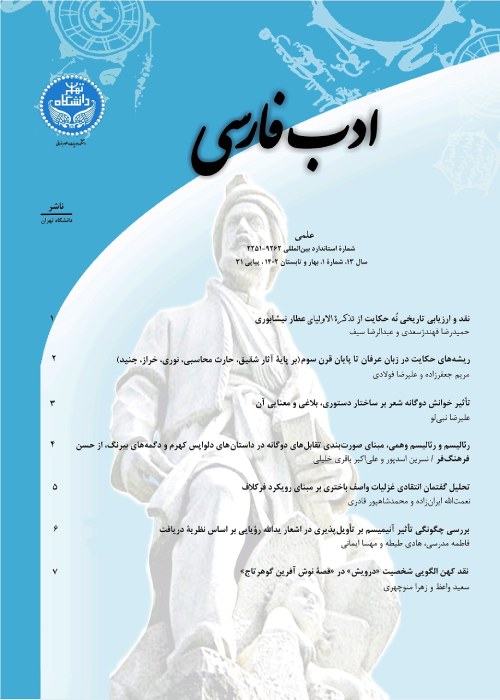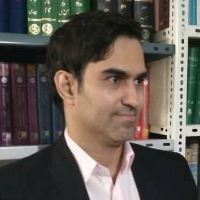Tahmoureth's Blade
Author(s):
Article Type:
Research/Original Article (دارای رتبه معتبر)
Abstract:
One of the common themes in the legends and epics of the world is the allocation of amazing weapons for the heroes ,that the common feature of them is the difference and distinction they have with ordinary weapons. Although in the original heroic poems such as Shah-nameh, Garshasb-nameh, Bahman-nameh and Kush-nameh, we are faced with a handful of these amazing weapons of heroes, but instead, in the scrolls of the Shah-nameh, later Pahlavani poems and Persian folk epic-adventure stories, there are a lot of such weapons that we are faced with them, arising from the structure of such stories; A structure that one of its characteristics is modeling the stories of the Shahnameh, heroic poems and religious-historical sources, and building new narratives and references; In other words, the requirement of the structure of such texts is to model from several examples of martial weapons mentioned in the Shah-nameh or other authentic heroic texts and to create a large number of new weapons and war tools. Although some of these weapons expressed in Naqali scrolls and long folk tales have their roots in ancient sources such as Avesta and Ferdowsi's Shahnameh, but many of them are created by the minds of storytellers and narrators. One of the most famous and prominent weapons in the Naqali scrolls and long folk tales is "Tahmoureth's blade". This blade, which is made and prepared by the creative mind of the narrators and storytellers, is a magical blade that only the Rostam family uses, and if we see very few examples of it in the hands of other fighters, they are the fighters who their actions were influenced by Rostam's stories. The importance of the present research is that the author deals with the mythological roots of Temmorth's blade, and examines its formation in scrolls and folk tales based on the common discourse in mythological and heroic literature. This research, which was carried out in a descriptive-analytical method and by using first-rate mythological, historical and epic sources, comes to the conclusion that the reason for the attribution of the anti sorcerer's blade to Tahmoureth is three mythological events: first, his being among the first kings; Second, Having a weapon, which is called "Zinavand" in mythological and Pahlavi texts.; And third, the anti-demonic function of Thammorth in Avesta, Pahlavi, epic and historical texts, which has caused him to be nicknamed "Divband". In addition, this blade, due to the "phenomenon of transmission", (which is one of the most important common topics in mythology and history, and by means of it, the features and characteristics of a mythological or historical character, for reasons such as similarity, proximity, kinship, companionship, substitution and synchrony, is transferred to another person), has also been attributed to kings or prophets such as Kiyoumarth, Jamshid and Suleiman, and has three important functions in narrative and folk texts, which are: killing Invulnerable demonic creatures; Killing Divan and dragons, invalidating the magic of witches.
Keywords:
Language:
Persian
Published:
Persian Literature, Volume:12 Issue: 2, 2023
Pages:
81 to 102
magiran.com/p2593360
دانلود و مطالعه متن این مقاله با یکی از روشهای زیر امکان پذیر است:
اشتراک شخصی
با عضویت و پرداخت آنلاین حق اشتراک یکساله به مبلغ 1,390,000ريال میتوانید 70 عنوان مطلب دانلود کنید!
اشتراک سازمانی
به کتابخانه دانشگاه یا محل کار خود پیشنهاد کنید تا اشتراک سازمانی این پایگاه را برای دسترسی نامحدود همه کاربران به متن مطالب تهیه نمایند!
توجه!
- حق عضویت دریافتی صرف حمایت از نشریات عضو و نگهداری، تکمیل و توسعه مگیران میشود.
- پرداخت حق اشتراک و دانلود مقالات اجازه بازنشر آن در سایر رسانههای چاپی و دیجیتال را به کاربر نمیدهد.
In order to view content subscription is required
Personal subscription
Subscribe magiran.com for 70 € euros via PayPal and download 70 articles during a year.
Organization subscription
Please contact us to subscribe your university or library for unlimited access!



